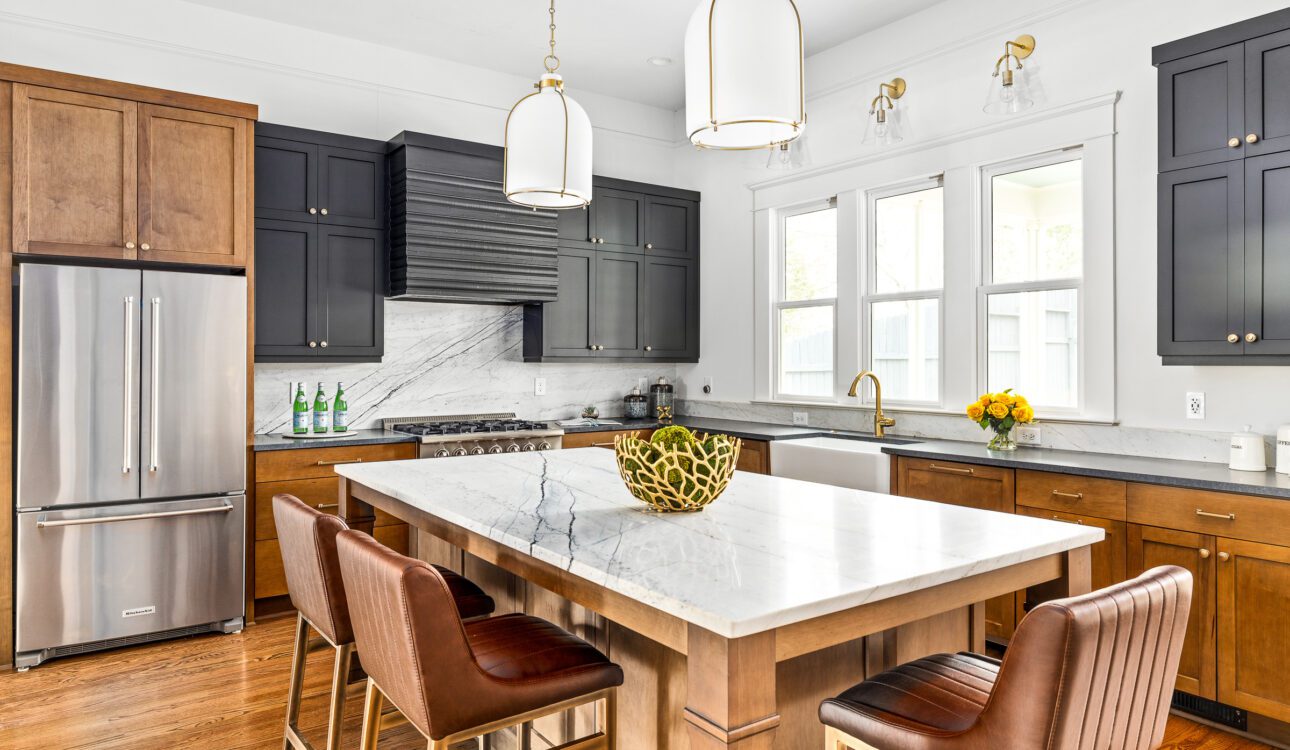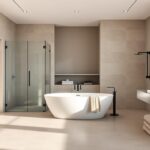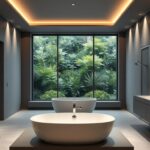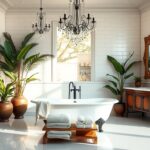We’ve analyzed 14 surface options through rigorous testing—from scorching pans to spilled wine—so you don’t have to guess what lasts. Prices range from budget-friendly ($10/sq ft) to premium ($150+), ensuring options for every home and lifestyle. Whether you love quartz’s reliability or marble’s timeless elegance, your perfect match exists.
This guide cuts through the noise with real-world data and design insights. You’ll discover how to balance daily practicality with your unique style, plus maintenance tips that save time and money. Our team at Fineline Kitchens is just a call away at +1 (703)-261-6151 or through our contact page for personalized advice.
Key Takeaways
- Surface durability varies dramatically—testing reveals top performers against stains, heat, and scratches
- Costs span from $10 to $150+ per square foot installed
- Popular choices include quartz, granite, and porcelain for their blend of beauty and resilience
- Consumer Reports’ data helps predict real-life performance
- Professional consultations ensure ideal matches for cooking habits and design visions
Introduction to Countertop Comparisons
When updating your kitchen, selecting the ideal surface requires careful consideration of daily use and long-term value. Our team evaluates surfaces by simulating real-life scenarios—hot pans, acidic spills, and heavy chopping—to reveal how different options perform over time.
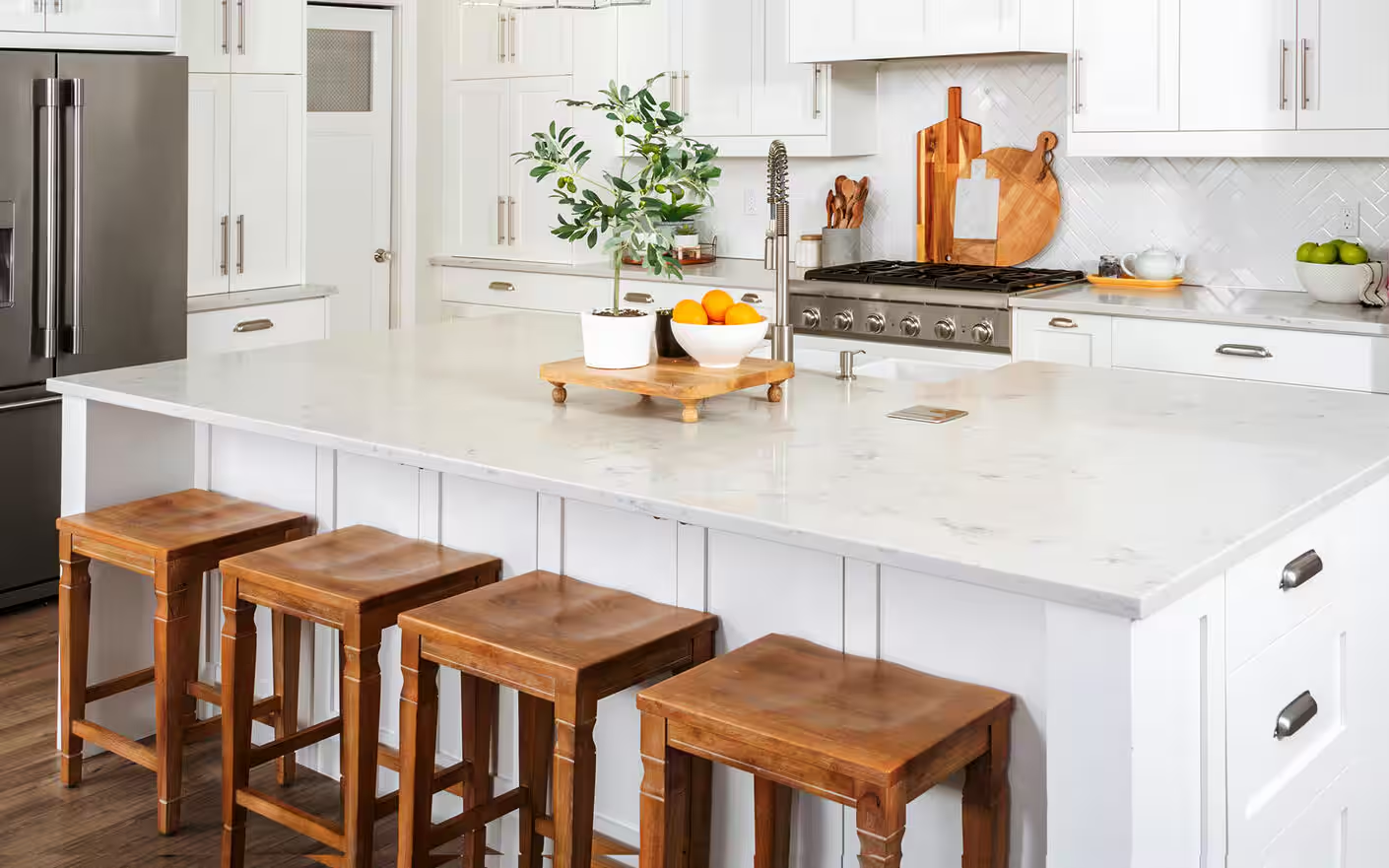
Consumer Reports’ testing shows dramatic differences between material types but minimal variation among brands. This means your focus should shift from labels to core characteristics like heat resistance and scratch recovery. For example, some surfaces bounce back from knife marks, while others stain permanently from coffee spills.
Three key factors guide smart comparisons:
- How the surface handles your family’s cooking habits
- Visual harmony with cabinets and flooring
- Maintenance routines that fit your schedule
A stunning marble island might charm guests but frustrate busy parents with its need for frequent sealing. Conversely, quartz offers low upkeep but fewer natural patterns. Our durability tests help predict which choices withstand years of meal prep without losing their appeal.
Need help navigating these trade-offs? Call +1 (703)-261-6151 for tailored advice matching your kitchen’s layout and your household’s rhythm. We’ll help you balance today’s needs with tomorrow’s practicality.
Understanding the Array of Options
Your kitchen’s surface choice impacts both daily life and long-term satisfaction. Natural stones like granite and marble form over millennia, creating one-of-a-kind veining that man-made alternatives can’t duplicate. Engineered options such as quartz blend crushed minerals with resins for predictable patterns and enhanced performance.
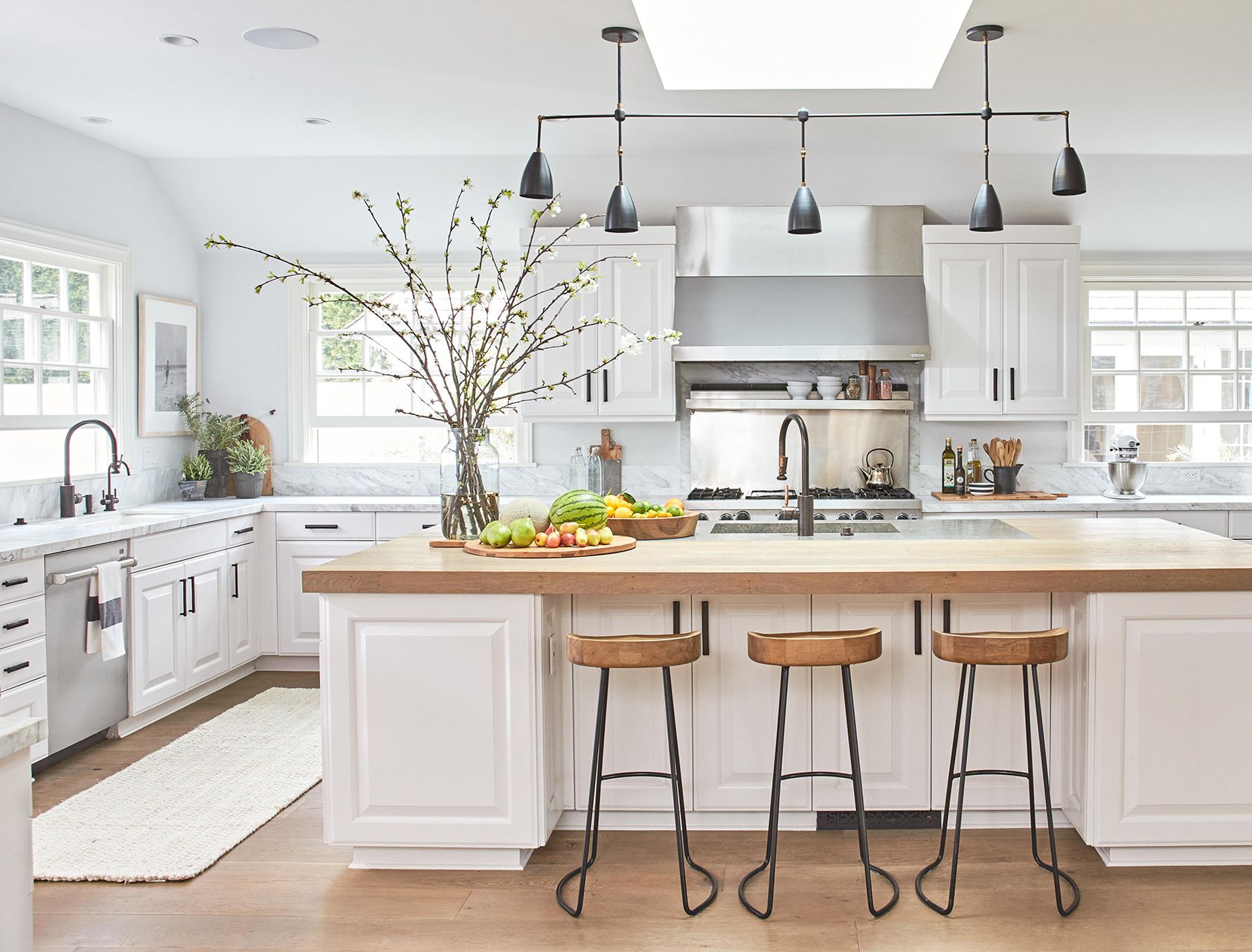
Overview of Natural vs. Man-Made Materials
Natural stone surfaces celebrate Earth’s artistry—no two granite slabs share identical flecks, and marble’s swirls tell geological stories. However, these beauties demand regular sealing to resist stains. Engineered products offer practical advantages: quartz resists etching from lemon juice, while porcelain handles hot pans without scorch marks.
“Homeowners often underestimate how cooking habits influence material performance,” notes Fineline Kitchens’ lead designer. “A surface that works for weekly bakers might fail daily stir-fry chefs.”
Key Factors: Durability, Cost, and Maintenance
Three pillars guide smart decisions:
| Factor | Natural Stone | Engineered |
|---|---|---|
| Durability | Scratch-resistant but stains easily | Non-porous; resists most damage |
| Cost | $50-$100/sq ft | $60-$150/sq ft |
| Maintenance | Annual sealing required | Daily wipe-down suffices |
Busy households often prefer engineered surfaces for their low-maintenance appeal, while design-focused spaces might prioritize natural stone’s character. Need help weighing these factors? Call +1 (703)-261-6151 for personalized guidance matching your lifestyle and budget.
In-Depth Look at Natural Stone Options
Natural stone surfaces bring Earth’s artistry into your kitchen, combining rugged durability with breathtaking beauty. Three options stand out for their unique qualities: granite’s fiery patterns, marble’s soft veining, and quartzite’s speckled elegance. Each requires different care levels but shares one trait—no two slabs ever repeat.
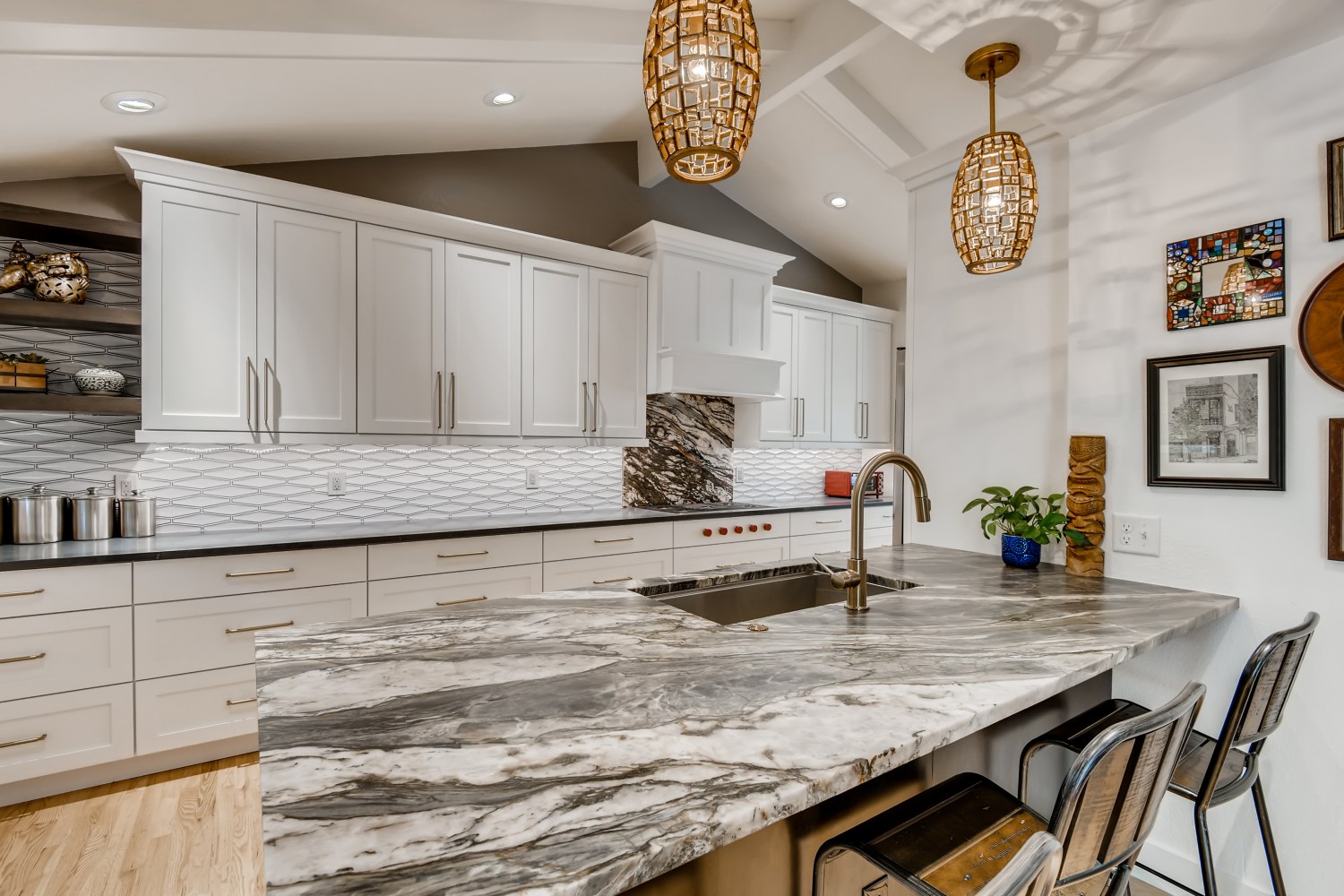
Granite, Marble, and Quartzite Characteristics
Granite handles hot pans like a champ—place sizzling skillets directly on its surface without fear. Prices range from $40-$100 per square foot installed. Its speckled patterns ensure your kitchen stays one-of-a-kind.
Marble dazzles with creamy veins but demands caution. Spilled orange juice or vinegar leaves permanent etch marks. At $50-$150 per square foot, it develops a patina that charms some homeowners and frustrates others.
Quartzite outshines both in hardness (7-8 on Moh’s scale). Acidic spills wipe clean without damage, and hot dishes won’t scorch it. This stone needs no sealing, making it ideal for busy cooks.
Pros and Cons of Natural Stone
| Feature | Granite | Marble | Quartzite |
|---|---|---|---|
| Heat Resistance | Excellent | Good | Superior |
| Maintenance | Yearly sealing | Monthly care | Wipe & go |
| Lifespan | 30+ years | 15-20 years | Lifetime |
While natural stone boosts home value, consider your lifestyle. Granite suits pizza lovers, marble pleases pastry chefs who don’t mind patina, and quartzite works for chaotic family meals. Our designers recommend sealing granite and marble every 12-18 months.
Need help choosing? Call for personalized maintenance plans. We’ll match your cooking habits to the perfect stone—because a stunning kitchen should work as hard as you do.
Engineered and Man-Made Alternatives: Quartz, Concrete, and More
Choosing the right surface for your home involves balancing aesthetics with real-world practicality. Modern engineered options solve this puzzle by combining visual appeal with enhanced durability. Let’s explore two popular choices reshaping kitchens nationwide.
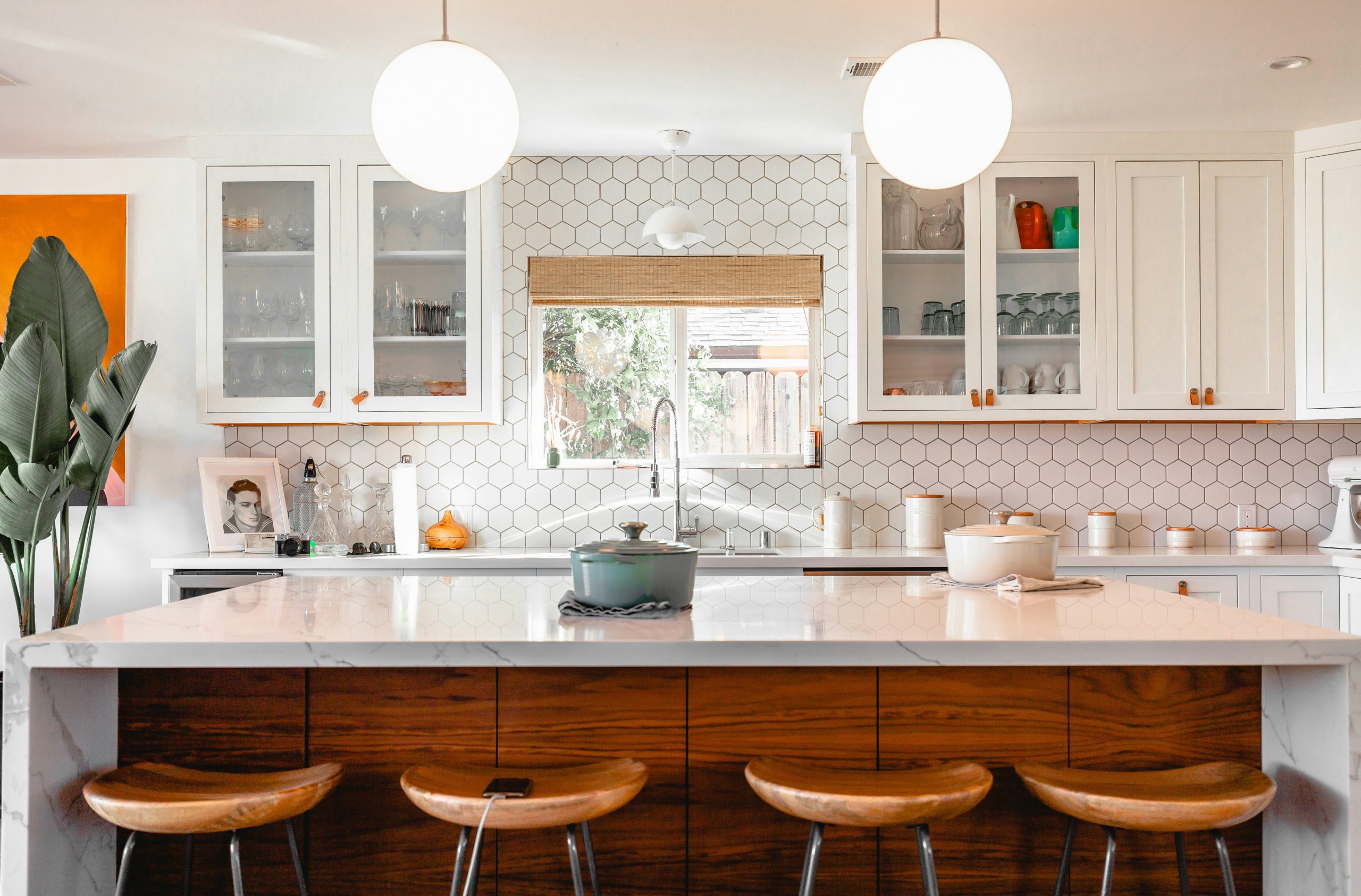
Quartz: Beauty Meets Practicality
Quartz revolutionizes kitchen design by blending crushed natural minerals with resins and pigments. This process creates surfaces that mimic marble’s elegance or granite’s depth while offering superior stain resistance. Unlike natural stone, quartz requires no sealing—its non-porous surface repels coffee spills and bacteria effortlessly.
Homeowners love quartz for its consistency. Every slab matches perfectly, eliminating the guesswork of natural stone patterns. At $40-$100 per square foot installed, it’s a smart investment for busy households. Our testing shows quartz maintains its shine even after years of meal prep and family gatherings.
Concrete’s Trade-Offs and Alternatives
While concrete offers custom designs and industrial chic appeal, it demands careful consideration. Priced at $60-$120 per square foot, these surfaces develop hairline cracks over time and stain easily without proper sealing. Chefs love concrete’s heat resistance, but frequent oil splatters require immediate cleaning.
| Feature | Quartz | Concrete |
|---|---|---|
| Maintenance | Daily wipe-down | Monthly sealing |
| Damage Resistance | Scratch-proof | Chips easily |
| Design Flexibility | Pre-set patterns | Fully customizable |
Other engineered options like porcelain and solid surface materials offer unique benefits. Porcelain handles extreme heat better than most surfaces, while recycled glass options create eco-friendly statement pieces. Consider long-term costs—quartz’s durability often makes it more budget-friendly over decades.
Need help navigating these options? Our design team specializes in matching lifestyles with perfect surfaces. Call for personalized comparisons that align with your cooking habits and design dreams.
Comparing Countertop Materials: Durability, Cost, and Style
Selecting the perfect surface for meal prep and gatherings requires smart comparisons. We tested six popular options under identical conditions—450°F heat exposure, vinegar spills, and simulated knife scratches—to reveal how they hold up over time.
Side-by-Side Comparison of Material Performance
Costs vary significantly across options. Porcelain and quartz sit at $55-$120 per square foot installed, while marble climbs to $250. Budget-conscious homeowners often choose granite ($50-$150) for its balance of affordability and natural beauty.
| Material | Cost per Sq Ft | Durability | Style Match |
|---|---|---|---|
| Quartz | $55-$125 | Stain-proof | Modern/Traditional |
| Granite | $50-$150 | Heat-resistant | Rustic/Transitional |
| Marble | $75-$250 | Scratch-prone | Luxury/Classic |
| Porcelain | $55-$120 | Acid-resistant | Industrial/Contemporary |
Durability testing uncovered clear winners. Quartz shrugged off red wine stains, while porcelain resisted lemon juice etching. Granite survived direct heat from pans, but marble showed permanent etch marks within 30 seconds of vinegar contact.
Style versatility matters too. Soapstone’s matte finish suits farmhouse designs, whereas quartz mimics marble for modern spaces. Our designers recommend:
- Busy families: Quartz or porcelain
- Baking enthusiasts: Granite or quartzite
- Entertainers: Marble (with sealant)
Long-term costs surprise many homeowners. While marble costs $75-$250 per square foot initially, its 15-year lifespan means potential replacement costs. Quartz often lasts 25+ years with minimal upkeep.
Need personalized advice? Call to discuss your cooking habits and design goals. We’ll help you find surfaces that look stunning and stand up to real-life chaos.
Spotlight on Butcher Block and Wood Countertops
The heartbeat of a welcoming kitchen often starts with surfaces that feel alive under your fingertips. Butcher block and wood options bring organic texture to spaces where families gather, priced between $40-$100 per square foot. Their natural grain patterns evolve with use, telling your home’s story through subtle changes over time.
Visual Appeal and Warmth in Kitchen Design
Wood surfaces soften modern kitchens with their earthy charm. Maple’s pale streaks suit minimalist spaces, while walnut’s rich swirls anchor rustic designs. Consider these popular choices:
- Maple: Tight grain resists scratches
- Walnut: Dark hues hide minor stains
- Oak: Bold patterns add character
Handling Stains and Wear & Tear
Finish types determine daily care needs. Varnished surfaces repel spills but show knife marks. Oil-finished wood handles heat better but absorbs stains deeply. Our tests revealed:
| Finish Type | Stain Resistance | Heat Tolerance |
|---|---|---|
| Varnished | High | Medium |
| Oil-Finished | Low | High |
“Refinish wood surfaces every 2-3 years,” advises Fineline Kitchens’ lead carpenter. “Use trivets for hot pans and wipe spills immediately to prevent rings.”
Islands and breakfast bars benefit most from wood’s cozy look. For busy households, pair with durable surfaces near sinks. Need help choosing finishes? Call for maintenance plans that keep your kitchen looking fresh.
The Rise of Quartz in Modern Kitchens
Kitchens nationwide are embracing a silent revolution—quartz surfaces now dominate 42% of new installations, according to recent industry reports. This surge stems from homeowners craving surfaces that keep pace with modern life. Unlike natural stone, quartz offers predictable performance through its engineered blend of minerals and resins.
Easy Cleaning and Long-Lasting Beauty
Spills become non-events with quartz. Consumer Reports found wine and coffee stains wipe clean without special cleaners—just soap and water. Our tests confirmed hot pans leave no marks, while knife scratches vanish with light buffing.
Design flexibility drives quartz’s appeal. Manufacturers now create slabs mimicking marble’s veins and granite’s speckles, plus bold colors nature can’t produce. Busy families love how these surfaces stay photo-ready despite breakfast chaos.
Consider these advantages:
- No annual sealing required
- 10-15 year warranties from top brands
- Consistent patterns for seamless installations
While costs range $55-$125 per square foot, quartz often outlasts pricier options. As noted in 2024 design trends, it’s become the go-to for kitchens merging style with real-world demands. Need help choosing the perfect slab? Our experts guide clients through textures and edge profiles that elevate any space.
Exploring Marble: Luxury Versus Practicality
Marble transforms kitchens into art galleries with its swirling veins and luminous surfaces. This natural stone ranges from $50-$150 per square foot installed, creating instant sophistication. But beneath its polished beauty lies a material that demands thoughtful care.
Acidic foods like tomatoes or wine leave permanent etch marks if not cleaned immediately. Even sealed surfaces require vigilance—wipe spills within minutes to prevent staining. Annual sealing becomes non-negotiable for maintaining marble’s pristine look.
Maintenance Challenges and Aesthetic Appeal
Many homeowners adore marble’s evolving character. “A patina isn’t damage—it’s a love letter to your kitchen’s history,” says a New York designer. Those preferring uniformity might struggle with:
- Cloudy spots from citrus juice
- Fine scratches from metal utensils
- Darkened areas near sinks
Popular marble varieties offer different durability levels:
| Type | Durability | Cost Range |
|---|---|---|
| Carrara | Moderate | $50-$80 |
| Calacatta | High | $100-$150 |
| Statuario | Medium | $75-$120 |
Smart placement reduces maintenance headaches. Use marble for:
- Baking stations (cool surface)
- Coffee bars (stain-resistant when sealed)
- Islands (showcase veining)
Beyond installation costs, budget $200-$500 yearly for professional polishing and sealing. Our team helps clients balance marble’s allure with practical care—call to design spaces where luxury meets livability.
Evaluating Concrete and Custom Countertop Options
Concrete surfaces turn kitchens into personalized workspaces where functionality meets artistic expression. These poured-in-place options adapt to curved islands or angled corners, solving layout challenges prefab solutions can’t touch. At $60-$120 per square foot installed, they offer unmatched design flexibility for homes needing custom solutions.
Customizable Designs vs. Prefabricated Solutions
Artisans mix pigments and aggregates into wet concrete, creating surfaces with embedded seashells or metallic flecks. Integrated sinks and waterfall edges become seamless extensions of the material. However, hairline cracks often appear over time, and hot pans may leave faint shadows without proper sealing.
Prefabricated options cut costs by 30-50% using standardized sizes. While quicker to install, they lack concrete’s organic texture. Our tests show:
- Custom pours handle irregular layouts better
- Prefab pieces resist chipping more effectively
- Both require annual sealing for stain protection
Balance creativity with practicality by using concrete for statement islands and prefab surfaces near appliances. Need help visualizing possibilities? Our design team creates 3D renderings showing how custom shapes enhance your space. Call to explore material combinations that turn kitchen dreams into functional reality.
FAQ
Is quartz really more durable than granite?
Yes! Quartz resists scratches, stains, and heat better than granite. Brands like Caesarstone combine crushed stone with resin for a tough surface. Granite needs annual sealing, while quartz stays pristine with just soap and water.
Can wood countertops handle heavy kitchen use?
Butcher block adds warmth but demands care. Oiling every 3–6 months prevents drying and stains. Avoid leaving spills or hot pans directly on the surface. With maintenance, brands like John Boos offer durable, long-lasting wood options.
Why pick marble if it stains easily?
Marble’s veining and timeless elegance make it a favorite for bakeries or statement islands. Use sealants like StoneTech BulletProof to protect against etching. It’s ideal for low-traffic areas where style outweighs practicality.
Are concrete countertops worth the customization effort?
Concrete offers unmatched personalization in color and texture. However, it requires sealing to prevent cracks and stains. Brands like Cheng Design provide prefab slabs for easier installation, balancing uniqueness with convenience.
What’s the most budget-friendly option?
Laminate costs – per square foot and mimics pricier materials. For mid-range, consider quartz (–0) or butcher block (–0). High-end choices like marble or custom concrete run 0–0+ per square foot.
